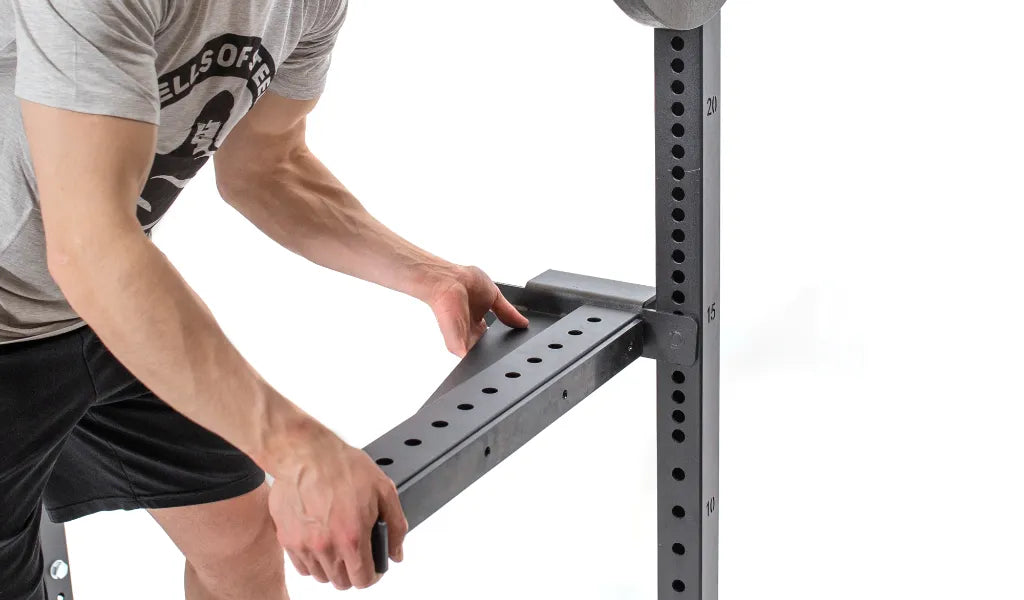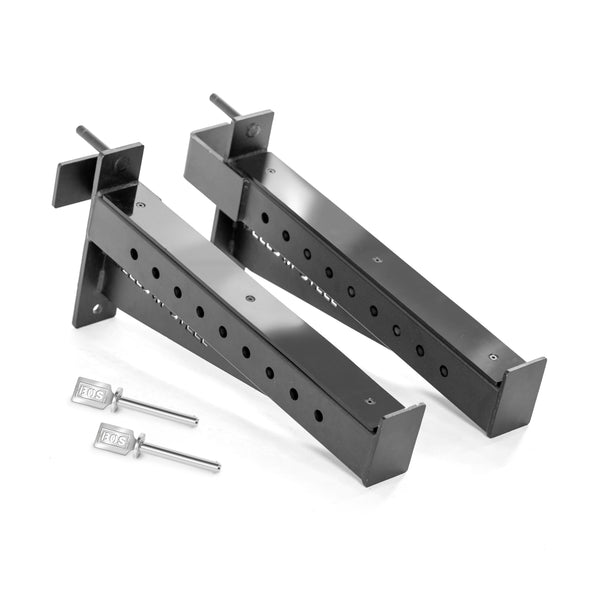Training solo at home can feel empowering—you're the boss of your gym, the weights are yours to command, and the mirror is your only competition. But here's the thing: working out alone means you’re 100% responsible for your safety. No spotters, no gym staff, just you, your weights, and your ambition.
While you can absolutely crush those PRs in the comfort of your own space, you need to approach solo training with the right strategies and gear to avoid injuries and make the most of your sessions. Let’s dive into how you can safely and smartly train on your own, so you’re always hitting new heights (without hitting the floor too hard).
1. Get the Right Gear (Safety First, Gains Later)
Why Gear Matters
The gear you use for solo training doesn’t just make you look cool—it keeps you safe. The right equipment is essential to minimize risk and maximize your performance. Think of it as building a fortress around your gains. Here’s the gear you can’t skip:
Must-Have Gear for Solo Training
-
Squat Rack or Power Rack: A sturdy power rack is a non-negotiable. This piece of equipment ensures that you can lift heavy without the worry of getting crushed under the bar. Look for one with adjustable safety bars that can catch the barbell if you fail a rep. Don’t trust a rack without these!
-
Barbell Collar Clips: Prevent those plates from sliding off mid-lift (which sounds like a nightmare). Secure collars keep everything where it should be, preventing a major mishap.
-
Lifting Belt: A solid lifting belt can help with core stability, especially during heavy squats and deadlifts. It’s like a personal cheerleader, except it also keeps your spine from screaming at you later.
-
Knee Sleeves and Elbow Sleeves: Supportive gear like knee and elbow sleeves can help reduce strain on your joints while providing compression, which is super helpful when you're pushing your limits.
-
Spotter Arms or safeties: If you're lifting heavy weights and have no spotter, spotter arms or safeties are your best friends. They’re like having a safety net for your heaviest lifts.
2. Warm Up and Cool Down Like a Pro
Don’t Skip This (Seriously)
You might be eager to jump into your workout, but trust us, skipping the warm-up is a recipe for disaster. Cold muscles and joints are more prone to injury, and let’s face it, you want to avoid having to crawl to the fridge for your post-workout protein shake.
-
How to do it: Start with dynamic stretches or light cardio (think jumping jacks, high knees, or a brisk walk) to get the blood flowing. Follow this with mobility exercises targeting your hips, shoulders, and ankles. After you’re done crushing your session, cool down with static stretches to keep muscles limber and promote recovery.
- Why it matters: A proper warm-up increases blood flow to muscles, lubricates joints, and reduces the risk of strains. The cool-down helps with flexibility and aids in recovery. Plus, you’ll feel like a pro while doing it!
👉 Check out our articles on injury prevention here.
3. Keep Your Lifting Sessions Within Your Limits
Know When to Say When
One of the biggest mistakes solo lifters make is attempting to lift more than they can handle without a spotter. It’s easy to get carried away when you’re setting PRs, but always know your limits and train safely.
-
How to do it: If you’re working with weights that are near your max, take extra precautions. For example, when bench pressing, always use spotter arms or safety bars to catch the barbell if you fail a lift. And if you feel fatigued or unsure about a rep, don’t push it—live to fight (and lift) another day.
-
Why it matters: Pushing past your limits solo can lead to catastrophic failures. Think about it—if you're bench pressing without a spotter and you fail the rep, you could be in serious trouble. Play it safe and save the heavy maxes for when a friend is around to help.
4. Stick to Good Form and Technique
Because You’re Not Invincible (No Matter What Your Ego Says)
It’s tempting to push yourself to lift heavier, but poor form can easily turn into a one-way ticket to Injuryville. Your body can only handle so much bad technique before it starts calling out in pain. Remember, good form is the foundation of long-term strength.
-
How to do it: Prioritize proper form with every lift. Start light to ensure you're moving through the full range of motion with control. If you’re lifting heavy, always be mindful of your posture, especially when it comes to compound lifts like squats, deadlifts, and overhead presses.
-
Why it matters: Proper form reduces the risk of injury and helps you lift more efficiently. Plus, it’s the best way to build strength sustainably. Your back will thank you.
5. Use Equipment That Won’t Let You Down
Invest in Quality
Cheap equipment might seem like a great way to save money, but trust us, it’s not worth it. A wobbly rack or unstable bench isn’t going to support you when you’re repping out those squats or bench presses.
-
How to do it: Don’t cut corners when it comes to equipment. Invest in sturdy, high-quality racks, benches, and weights. Make sure your equipment is designed for the kind of lifting you’re doing. For example, if you plan to do a lot of overhead work, make sure your rack is tall enough to handle it.
-
Why it matters: Quality equipment provides stability, safety, and peace of mind. It also holds up better over time. Plus, you’ll feel like a real powerhouse when you’re training with gear that’s built to last.
6. Plan for the Unexpected
What If Things Go South?
In case you do find yourself in a situation where you need help (like when you fail that rep), it’s crucial to have a plan. No one wants to get stuck under a barbell, but it’s always better to be prepared.
-
How to do it: Always let someone know you're training, especially if you're going for heavy sets. Set up your equipment in a way that minimizes the risk of injury, and always use safety bars or spotter arms when working with heavy loads. In the unlikely event that things go wrong, having a phone nearby to call for help can make all the difference.
-
Why it matters: Safety measures should be a priority in case of emergencies. Being prepared means you can train confidently without worrying about the worst-case scenario.
FAQs About Solo Training Safety
Q: What should I do if I fail a rep with no spotter?
A: First of all, don’t panic. If you’re using a squat rack or power rack, the safety bars should catch the barbell. For bench presses, use spotter arms to protect yourself. If that’s not available, make sure you train with weights you can safely lift without a spotter.
Q: How can I avoid injury when lifting heavy alone?
A: The key is to train within your limits and use safety equipment. Always have your safety bars in place, and don’t go beyond what you can handle. Listen to your body—if it feels like too much, it probably is.
Q: Do I need a spotter to do deadlifts safely?
A: While a spotter isn’t essential for deadlifts (since you’re pulling the bar off the ground, not pressing it over your chest), good form and a solid grip are. Always check that your form is spot-on to avoid unnecessary strain or injury.
Conclusion: Train Smart, Lift Hard
Solo training at home is an incredible way to get stronger, but it’s not without its risks. By taking the right precautions, investing in solid gear, and respecting your limits, you can make sure your workouts are not only effective but safe. Remember, no amount of weight is worth risking your health or your safety. So, keep that squat rack sturdy, your form on point, and your warm-ups legit. You’ve got this, just don’t forget to keep it safe so you can keep crushing it—no spotter required!
Now go on, show those weights who’s boss—just make sure you’ve got a backup plan if things get wild!



